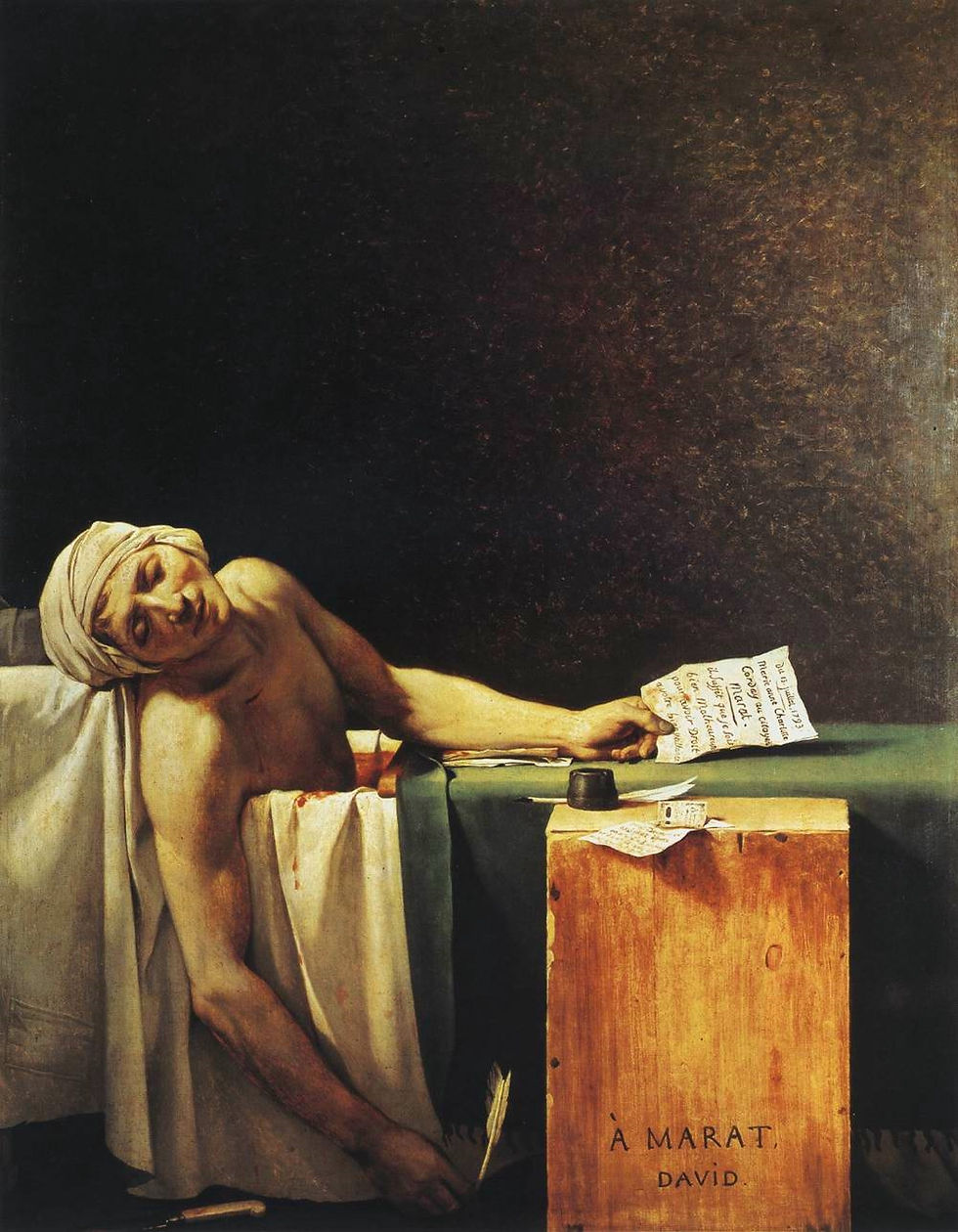Jacques Louis David - The Death of Marat
- Alexandra Tuschka
- 4. Jan. 2021
- 2 Min. Lesezeit
Aktualisiert: 4. Jan. 2021
by Stephan Franck
"The Death of Marat" is not simply testimony to the murder of a leader of the French National Convention. Rather, the painting of Jeaques-Louis David is of art historical conciseness. For David is not only the author of the painting and an artist of the French Revolution, but also a friend of Marat from the political camp of the Jacobins.

The historical details can be taken from the picture almost without exception. In addition to the face of Marat in the bathtub, the murder weapon lying on the ground, the wooden box with the inscription "À Marat, David", the victim holds the letter addressed to him by the assassin Charlotte Corday together with the date prominently in the picture. The latter was close to the Girondists and had declared the politically active Marat to be an enemy.
Thus, this painting shows not only two of the prominent spokesmen of the revolution, but with the written finger pointing to the assassin also the disunity of the French people within this historical situation. With the help of these key data, the high staging of the just passing away becomes obvious to the viewer. Just like Caravaggio's "Entombment of Christ", David exaggerates Marat's sacrifice through the cast shadow-like lighting. The turning of the face towards the viewer transfigures the sitter into a martyr of his cause. Through the additionally inscribed temporality, in that David lets the victim slowly bleed to death, a quasi-religious dramaturgy is created for the viewer, which, in addition to satisfying sensationalism, symbolizes the apotheosis of the martyred as a hero for the French Revolution on the eve of modernity.
Jacques Louis David - The Death of Marat
Oil on canvas, 1793, 162 x 128 cm, Royal Museums of Fine Arts in Brussels






